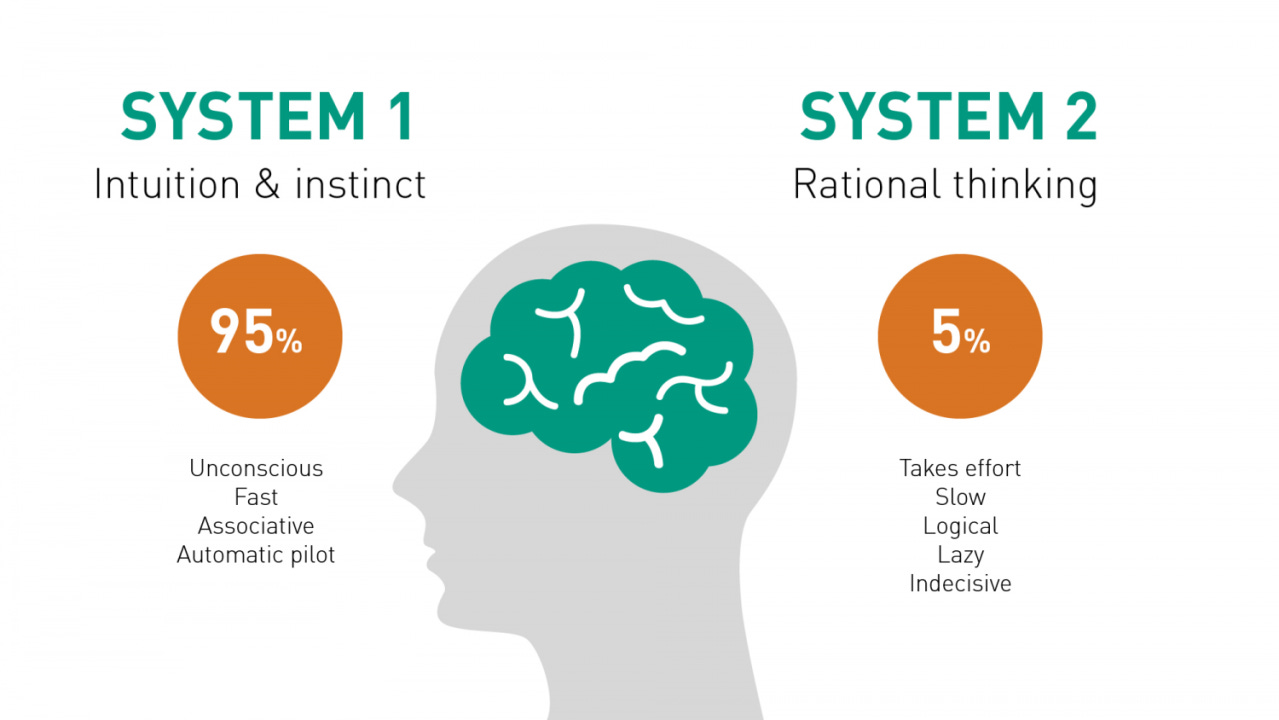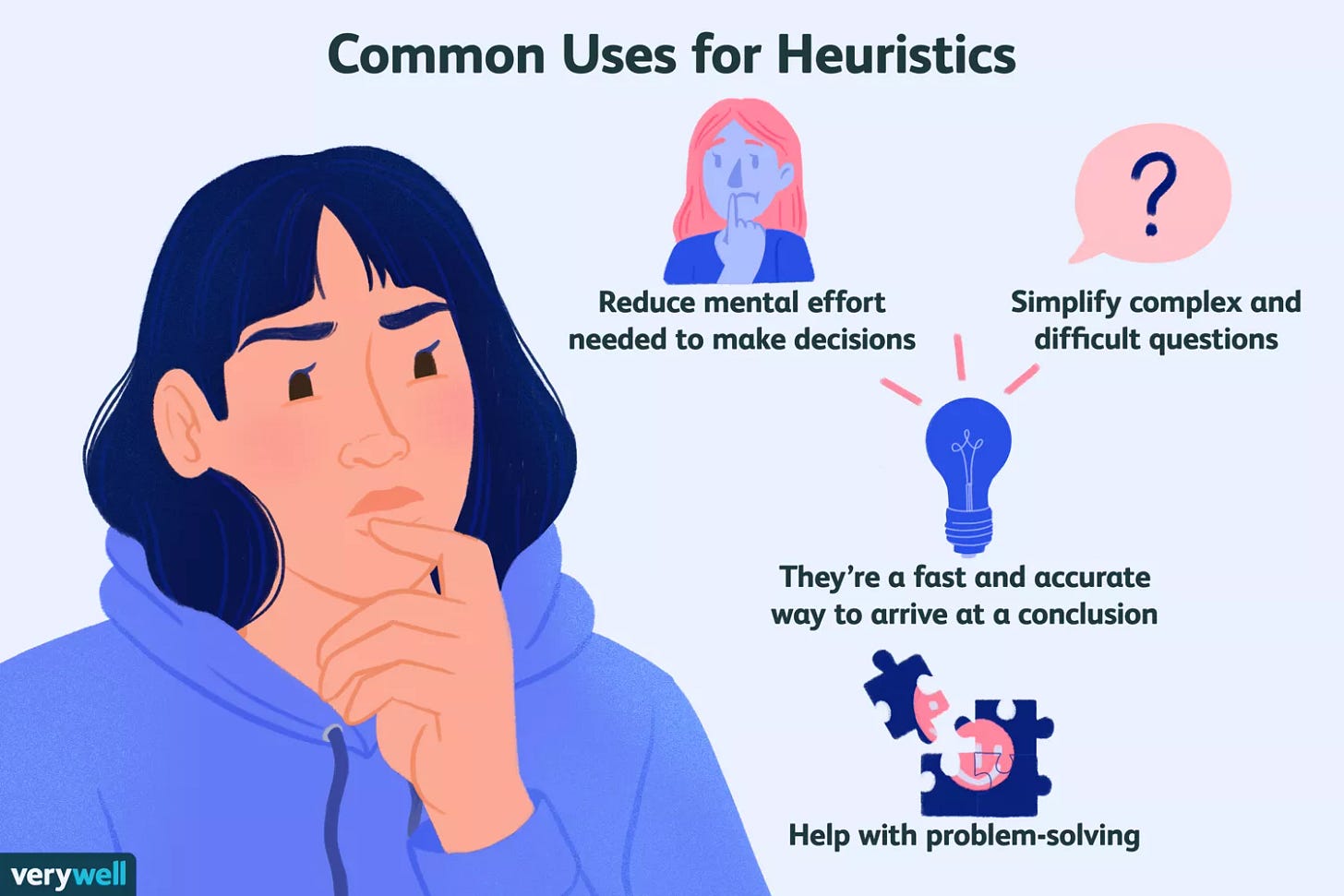System 1 and System 2 Thinking: Understanding How Consumers Think and Make Decisions
Understanding the Subconscious, Heuristics, and Cognitive Biases to to Enhance Your Marketing Strategy
Imagine You’re Running Late for Work...
It’s a busy Monday morning. You rush out of your house and head to the subway, realizing you didn’t have your usual cup of coffee. You glance around and see two coffee shops. One has a long line but is known for its great coffee. The other is nearly empty, but you’re unsure about the quality.
In that split second, you decide to go to the nearly empty coffee shop. You make this decision without much thought, driven by your need to save time and avoid being late.
This is your System 1 in action – making a fast, automatic, and intuitive decision.
As you sip your coffee on the subway, you start thinking about whether you made the right choice.
This reflective process engages your System 2 – analyzing and evaluating the decision you made.
What Are System 1 and System 2?
System 1
is fast, automatic, and intuitive.
It operates effortlessly and quickly, without conscious thought. This system is responsible for quick judgments, first impressions, and gut reactions.
For example, when you instantly recognize a friend's face in a crowd or slam on the brakes to avoid an accident, you're using System 1.
It's our brain's default mode, helping us navigate everyday situations with speed and efficiency.
System 2
is slow, deliberate, and analytical.
It requires conscious effort and attention. This system kicks in when we need to analyze data, solve complex problems, or make strategic decisions.
For instance, when you're calculating a budget, planning a business strategy, or working through a challenging puzzle, you're engaging System 2.
It demands more energy and focus, as it's responsible for logical reasoning and critical thinking.
System 1 and System 2 are terms associated with Daniel Kahneman's groundbreaking work on decision-making. Understanding these systems is crucial not just for everyday choices but also for making smarter business decisions.
In the world of business, where interactions and decisions are driven by human behavior, knowing how people think and act can give you a significant edge.
This post will delve into System 1 and System 2, explore their impact on business and marketing. After all, business is about understanding humans.
Who is Daniel Kahneman?
Daniel Kahneman is a renowned psychologist and Nobel laureate known for his groundbreaking work in behavioral economics. Born in 1934, he spent much of his career studying human judgment, decision-making, and the psychology of happiness.
Kahneman is best known for his book Thinking, Fast and Slow, which explores the dual systems of thought – System 1 (fast, intuitive thinking) and System 2 (slow, deliberate thinking).
His research has significantly influenced our understanding of cognitive biases and irrational behavior, reshaping economics and psychology.
Kahneman's work has provided deep insights into how people make decisions, helping businesses and policymakers design better strategies and improve outcomes.
The Power of the Subconscious Mind
Our subconscious mind is a powerful part of our brain that influences our thoughts, actions, and decisions, even when we don’t realize it. It works quietly in the background, processing lots of information quickly.
This hidden part of our mind helps us with everyday tasks, like remembering to brush our teeth or driving a familiar route without thinking about it.
Our subconscious mind is always taking in and storing information, which shapes our beliefs, habits, and behaviors. It uses past experiences, emotions, and learned patterns to guide us automatically.
For example, when you quickly pull your hand away from a hot stove, it’s your subconscious mind protecting you from getting hurt.
This mental autopilot is really helpful because it lets us react quickly in emergencies or do routine tasks without much effort. However, it can also lead us to make mistakes, especially in tricky or new situations.
Heuristics: Mental Shortcuts
Humans make about 35,000 decisions a day. To manage this, our brain uses heuristics, which are mental shortcuts that simplify decision-making.
Heuristics let us make quick decisions without analyzing every detail. For example, if you see a crowded restaurant, you might think it’s good and decide to eat there without checking reviews. This saves time and brainpower, but it’s not always right.
Cognitive Biases
While heuristics can be helpful, they can also cause cognitive biases—thinking errors that affect our decisions and judgments. These biases happen because our subconscious mind relies on heuristics that might not always be logical or correct. Here are a few common cognitive biases:
Anchoring Bias: The tendency to rely too much on the first piece of information we see (the "anchor") when making decisions. For example, the first price we hear for something can influence what we think it’s worth.
Confirmation Bias: The tendency to look for, interpret, and remember information that confirms what we already believe, while ignoring information that doesn’t.
Why Understanding Biases Matters
Recognizing and understanding cognitive biases is important, especially when making decisions. Biases can lead to bad judgments, missed opportunities, and even big mistakes.
By becoming aware of these mental shortcuts and their possible problems, we can make better, more rational decisions.
Key Takeaways
System 1 and System 2: Daniel Kahneman’s concepts of System 1 (fast, intuitive thinking) and System 2 (slow, analytical thinking) are crucial for understanding human decision-making.
Subconscious Mind: The subconscious mind operates behind the scenes, guiding our actions based on past experiences and learned patterns.
Heuristics: These are mental shortcuts that help us make quick decisions but can sometimes lead us astray.
Cognitive Biases: Biases like anchoring, confirmation, and availability affect our judgments and decisions, often without us realizing it.
Importance in Business: Understanding these concepts helps in making smarter, more informed business decisions and better strategies.
Become more aware of how your subconscious mind and cognitive biases influence your decisions.
Apply this knowledge to improve your personal and business choices. Stay tuned for more insights on cognitive biases and their impact on your decision-making process.





